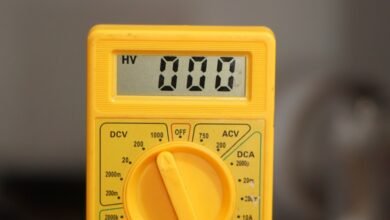How to Recover Deleted Text Messages on iPhone (Even Without Backup)
Learn how to recover deleted text messages on your iPhone with or without backup. Step-by-step guide for iOS 16 users and older versions. Get your messages back fast.

You know that sinking feeling when you realize you just deleted an important text message? Maybe it was an address you needed, a photo someone sent, or a conversation that held sentimental value. The good news is that recovering deleted text messages on iPhone is more possible than you might think, and you don’t always need a backup to do it.
Apple has made significant improvements to how iPhones handle deleted messages, especially with iOS 16 and later versions. Whether you accidentally swiped away a conversation while clearing your inbox or your messages disappeared after an iOS update, there are several proven methods to retrieve deleted text messages on iPhone. The key is knowing which method to use based on your situation and acting quickly before those messages are gone for good.
In this comprehensive guide, I’ll walk you through every method for iPhone text message recovery, from the built-in features Apple provides to alternative solutions when those don’t work. You’ll learn how to use the Recently Deleted folder, restore from backups, and even explore options when you thought all hope was lost. Let’s get your messages back.
Understanding What Happens When You Delete Text Messages
Before jumping into recovery methods, it helps to understand what actually happens when you delete text messages on iPhone. When you remove a message or conversation, it doesn’t instantly vanish from your device’s storage. Instead, iOS marks that space as available for new data. Until new information overwrites it, there’s a window of opportunity for recovery.
For iPhones running iOS 16 or later, deleted messages first move to a Recently Deleted folder where they remain for 30 to 40 days before permanent deletion. This safety net gives you more than a month to change your mind, similar to how the Photos app handles deleted pictures.
The longer you wait after deleting messages, the higher the chance that new data will overwrite them, making recovery impossible. That’s why time is critical when trying to recover permanently deleted messages iPhone.
Method 1: Using the Recently Deleted Folder (iOS 16 and Later)
If you’re running iOS 16 or newer, this is hands down the easiest way to recover deleted text messages iPhone. Apple introduced the Recently Deleted folder specifically to prevent accidental data loss, and it works beautifully for most situations.
Step-by-Step Instructions:
- Open the Messages app on your iPhone
- Tap “Edit” in the top-left corner of your conversation list (or tap “Filters” if you have message filtering enabled)
- Select “Show Recently Deleted” from the dropdown menu
- Browse through your deleted conversations and check how many days remain before permanent deletion
- Tap the circle next to each conversation you want to recover
- Tap “Recover” at the bottom of the screen
- Confirm by tapping “Recover Messages”
Your recovered messages will immediately appear back in your main Messages inbox, right where they were before deletion. If you use Messages in iCloud, recovering a message on your iPhone automatically recovers it across all your Apple devices where Messages in iCloud is enabled.
Important Limitations:
This method only works for messages deleted within the last 30 to 40 days. If you deleted a message before updating to iOS 16 or later, you cannot recover that message using this method. For older deletions, you’ll need to use backup restoration methods covered below.
Method 2: Restore from iCloud Backup
When the Recently Deleted folder doesn’t help, or you’re running an iOS version older than 16, restoring from iCloud backup is your next best option. This method works if you regularly back up your iPhone to iCloud and have a backup from before the messages were deleted.
Before You Start:
Critical warning: Restoring from an iCloud backup will erase all current data on your iPhone and replace it with data from the backup. Anything added after that backup (new messages, photos, contacts, app data) will be lost. Make sure this tradeoff is worth it.
How to Check Your iCloud Backups:
- Open Settings and tap your name at the top
- Tap iCloud, then Manage Storage
- Tap Backups and select your iPhone
- Check the date and size of your most recent backup
Look for a backup created before you deleted the messages. If the backup is too recent, it won’t contain your deleted texts.
Restoring Your iPhone from iCloud:
- Go to Settings > General > Transfer or Reset iPhone
- Tap Erase All Content and Settings
- Follow the on-screen prompts until you reach the Apps & Data screen
- Select Restore from iCloud Backup
- Sign in to iCloud with your Apple ID
- Choose the backup that contains your deleted messages
- Wait for the restoration process to complete
The restore can take anywhere from 30 minutes to several hours depending on your backup size and internet connection speed. Make sure your iPhone stays connected to WiFi and power during this process.
Also Read: Recover Deleted Files in Windows, 9 Proven Ways
When iCloud Restore Won’t Work:
If you sync Messages with iCloud (which is turned on by default), there may be no backup of those messages in iCloud at all. The Messages in iCloud feature stores your texts in the cloud and syncs them across devices, but it doesn’t create traditional backup snapshots. In this case, you’ll need to try other methods.
Method 3: Restore from Mac or PC Backup
If you’ve been backing up your iPhone to a Mac (using Finder) or PC (using iTunes), you can restore deleted text messages from these local backups. This method works similarly to iCloud restoration but uses a backup stored on your computer instead.
For Mac Users (macOS Catalina and Later):
- Connect your iPhone to your Mac with a USB cable
- Open Finder and select your iPhone from the sidebar
- Click “Restore Backup” in the General tab
- Select the backup created before you deleted the messages
- Click “Restore” and wait for the process to complete
For Windows Users or Older Macs:
- Connect your iPhone to your computer
- Open iTunes (it should launch automatically)
- Click the iPhone icon in the top-left corner
- Select “Summary” from the left menu
- Click “Restore Backup”
- Choose the appropriate backup and click “Restore”
Like iCloud restoration, this will erase your current iPhone data and replace it with the backup. The advantage is that computer backups are sometimes more complete and include data that iCloud backups might miss.
Method 4: Using Third-Party Recovery Software
When built-in methods fail, third-party iPhone data recovery software can sometimes retrieve deleted messages without requiring a full device restoration. These tools scan your iPhone’s internal storage for data remnants that haven’t been overwritten yet.
Popular options include PhoneRescue for iOS, Dr.Fone, Tenorshare UltData, and similar programs. According to Apple’s official support documentation, while these tools exist, users should exercise caution and stick with reputable software.
How These Tools Generally Work:
- Download and install the recovery software on your computer
- Connect your iPhone via USB cable
- Launch the software and select the recovery mode (usually “Recover from iOS Device”)
- Scan your iPhone for recoverable data
- Preview the found messages before recovery
- Select the messages you want to restore
- Export them to your computer or restore to your device
Important Considerations:
- Success is not guaranteed: These tools work best immediately after deletion, before new data overwrites the old message data
- Cost: Most legitimate recovery software requires payment, typically ranging from $40 to $100
- Privacy concerns: You’re granting third-party software deep access to your device
- Avoid shady software: Only use well-reviewed, reputable tools to avoid malware or scams
Third-party recovery should be a last resort when Apple’s built-in methods don’t work and the messages are critically important.
Method 5: Contact Your Cellular Carrier
Here’s a method most people don’t think about: asking your mobile carrier if they have records of your text messages. Some carriers retain SMS message logs for a limited period, typically a few days to a couple of weeks.
How to Request Message Records:
- Call your carrier’s customer service (Verizon, AT&T, T-Mobile, etc.)
- Provide your account information and verify your identity
- Request SMS message retrieval for the specific date range
- Explain the situation and ask about their data retention policies
Major Limitations:
This method typically only works for SMS messages and does not apply to iMessages, which are end-to-end encrypted and not stored by carriers. If your deleted conversation was an iMessage (blue bubbles), your carrier cannot help you recover it.
Additionally, carriers may charge a fee for this service, the process can be time-consuming, and they may require a court order for message content retrieval depending on their policies.
Method 6: Check Other Devices Signed Into Your Apple Account
If you use Messages in iCloud, your text conversations sync across all Apple devices logged into your account. There’s a chance your deleted messages still exist on another device that hasn’t synced the deletion yet.
Devices to Check:
- Other iPhones in your household
- iPad with Messages enabled
- Mac with the Messages app
- Apple Watch (for recent message snippets)
Look for the deleted conversation on these devices. If you find it, turn off WiFi and cellular data immediately to prevent the deletion from syncing, then screenshot or export the important messages.
For detailed guidance on managing Messages across devices, Apple’s support page provides comprehensive instructions on message syncing and recovery options.
What About Permanently Deleted Messages?
The term “permanently deleted” can mean different things. Once messages are removed from the Recently Deleted folder after 30-40 days, they are considered permanently deleted and recovery becomes much more difficult.
At this stage, your only realistic options are:
- Restore from a backup created before the messages were deleted
- Use third-party recovery software immediately (before data overwriting occurs)
- Check if the other person in the conversation still has the messages on their device
If none of these apply, the messages are likely unrecoverable. This is why prevention through regular backups is so important.
Best Practices to Prevent Message Loss
Rather than dealing with recovery headaches, set up systems to protect your messages from the start:
Enable Regular Backups:
- Turn on iCloud Backup: Settings > [Your Name] > iCloud > iCloud Backup > Toggle on
- Connect to WiFi nightly so automatic backups occur
- Periodically back up to your computer for an extra safety layer
Use Messages in iCloud Wisely:
While Messages in iCloud syncs your conversations across devices, understand that deleting a message on one device deletes it everywhere. There’s no “undo” button after the Recently Deleted period expires.
Screenshot Important Information:
For critical details shared via text (addresses, confirmation numbers, important dates), take screenshots and save them to your Photos app or Files app. This creates a separate backup independent of your Messages app.
Export Important Conversations:
You can forward entire conversations to your email or save them as PDFs using third-party apps. This is particularly useful for conversations with legal, financial, or sentimental significance.
Troubleshooting Common Issues
Recently Deleted folder is empty or missing: Make sure you’re running iOS 16 or later. On older versions, this feature doesn’t exist. Also verify that you haven’t disabled the Messages app or restricted certain features through Screen Time settings.
Backup restoration fails: Ensure your iPhone is connected to stable WiFi, has sufficient battery (or is plugged in), and has enough storage space for the backup. Try restarting your iPhone and attempting the restoration again.
Third-party software shows no recoverable messages: This often means the data has already been overwritten. The sooner you attempt recovery after deletion, the higher your success rate.
Messages won’t restore from computer backup: Verify the backup was created with the same Apple ID and that your computer has the latest version of Finder (Mac) or iTunes (Windows). Older software versions sometimes have compatibility issues.
Key Takeaways for iPhone Message Recovery
Recovering deleted text messages on iPhone is definitely possible, especially if you act quickly and know which method to use. The Recently Deleted folder in iOS 16 and later makes recovery simple for recent deletions, while backup restoration methods provide solutions for older messages.
Even without backups, third-party tools and carrier assistance offer additional paths to retrieve deleted text messages iPhone users thought were gone forever.
The most important factor is time: the faster you attempt recovery after deletion, the better your chances of success. Set up regular backups today so you’ll always have a safety net, and remember that prevention is far easier than recovery when it comes to protecting your important conversations.











